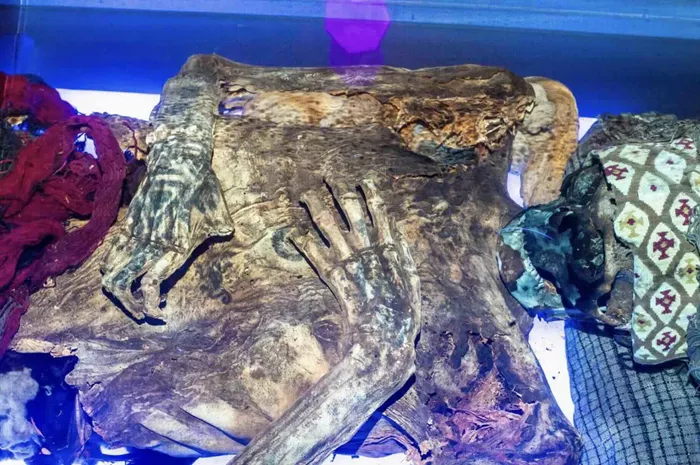In a groundbreaking discovery, scientists have uncovered intricate tattoos on the mummified remains of an individual from Peru’s Chancay culture, dating back over 1,200 years. Using advanced imaging techniques, this discovery sheds new light on the complexity of body art in ancient Peru, providing valuable insights into the methods used by early artists and expanding our understanding of pre-Columbian societies.
Dr. Michael Pittman, a researcher from The Chinese University of Hong Kong (CUHK), in collaboration with Thomas G. Kaye from the Foundation for Scientific Advancement, uncovered the tattoos using laser-stimulated fluorescence (LSF) technology. This non-invasive imaging technique revealed fine-line tattoos on the skin, offering a glimpse into the detailed tattooing practices of ancient Peruvians and challenging existing assumptions about the capabilities of early tattoo artists.
The Chancay culture, which flourished in Peru before the arrival of Europeans, is known for its distinctive pottery, textiles, and rock art. The tattoos discovered on the mummified remains feature elaborate geometric and zoomorphic patterns, showcasing the same level of artistic skill seen in other Chancay art forms. The tattoos are notable not only for their precision but also for their complexity, offering evidence that ancient tattoo artists may have possessed advanced techniques comparable to those used in modern tattooing.
Dr. Pittman emphasized that the discovery is significant because it highlights the similarities between ancient and contemporary tattoo practices. “Tattoos today remain a form of artistic expression and carry cultural significance,” he noted. “The tattoos we found in Chancay cannot be made with a standard modern tattoo needle, which shows how much more we can learn from traditional tattoo artists about this enduring art form.”
The use of LSF technology allowed researchers to overcome challenges posed by the natural decay of skin over time, which had previously made it difficult to study ancient tattoos. By producing high-contrast fluorescence images, LSF revealed tattoos with intricate designs as narrow as 0.1-0.2 mm, providing a level of detail that was previously impossible to detect.
Despite the breakthroughs, several questions remain about the tattooing practices of the Chancay people. One of the main mysteries is the exact process used by ancient artists to create these tattoos, a question that continues to intrigue researchers.
This discovery adds to the growing body of evidence suggesting that tattooing has been a significant part of human culture for thousands of years. From the 5,000-year-old tattoos of the Iceman, Ötzi, to the modern-day tattoo art that continues to evolve, tattoos have long served as a means of personal expression, cultural identity, and artistic achievement.
As researchers continue to study ancient tattoos, they are uncovering not only the techniques behind this ancient art form but also the broader cultural contexts in which tattoos played a role in the lives of their wearers. The Chancay tattoos are a testament to the enduring legacy of body art across time and cultures.
Related topics:

